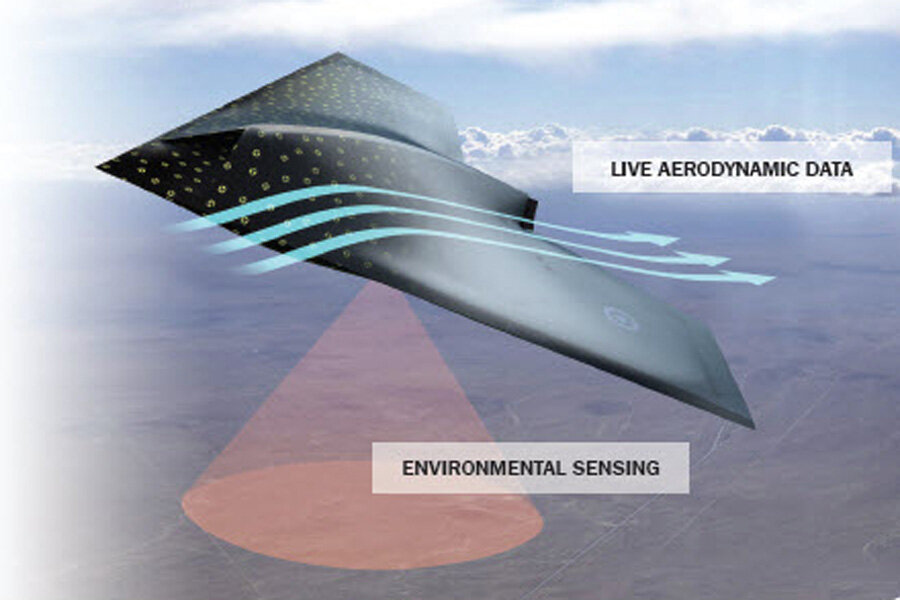New smart skin for aircraft lets planes 'feel' pain
Loading...
The adage “no pain, no gain” now applies to aircraft after BAE Systems' Advanced Technology Center revealed plans for a new spray-on aircraft skin composed of sensor “motes” that form a “smart skin” that would give airplanes the ability to feel injuries and let the flight computer know where repair is needed before problems arise from the damage.
Pilots would gain from the addition of vital real-time data and the opportunity to avert some of the dangers that can come from stress and fatigue on the aircraft that could be missed in a visual pre-flight surface check by human eyes.
According to BAE, the idea is to embed tens of thousands of micro-sensors into an airplane skin to give a pilot more accurate data on things such as wind speed, movement, temperature, and strain being placed on the plane.
“These tiny sensors or ‘motes’ can be as small as grains of rice and even as small as dust particles at less than 1 [millimeter] squared,” according to the BAE release. “Collectively, the sensors would have their own power source and when paired with the appropriate software, be able to communicate in much the same way that human skin sends signals to the brain. The sensors are so small that we are exploring the possibility of retrofitting them to existing aircraft and even spraying them on like paint.”
This new “smart skin” would have the ability to sense and report a range of data from damage to the plane’s skin to temperature changes beneath the surface (which could be early detection of an element overheating) and relay that information to the in-flight computer.
This skin runs itself, much in the same way human skin detects changes in temperature, wind, and injury. The sensors have their own, unnamed power sources and constantly send data back to flight computers.
Because planes fitted with this skin would be connected to flight computers constantly relaying fresh data, this advance could drastically reduce time spent on the standard pre-flight checks of the plane body in favor of a surface monitoring system.
“A Fight Crew Pre Flight External Check is part of the basis for the Captain's Aircraft Acceptance which must be formally recorded in the Aircraft Technical Log prior to every flight departure. It is primarily, therefore, a general visual inspection of those aspects of fitness of the aircraft for flight which can be verified wholly or partly in that way,” according to SKYbrary, a wiki created by international flight groups.
This could also reduce the risk of injury to the flight crews and technicians tasked with examining the exterior of the aircraft. “Anybody conducting an aircraft external check is at risk from a collision with an airside vehicle,” notes SKYbrary. “Any external check will normally be conducted from ground level; any intended exception to this should be carefully assessed against the risk of falling from height and sustaining injury.”
Therefore, instead of continuing to physically climb up onto the planes and make visual assessments from the busy and potentially dangerous runway, data is sent from the plane itself, input directly into the flight computer.
Also, this new sensitive aeronautic epidermis could ultimately have consumer applications far beyond safety or the reduction of how long travelers spend waiting on runways during lengthy pre-flight checks.
While this is an idea in its infancy and the potential for applications of this spray-on skin sensor technology have not yet been addressed, it seems as if it could be retro-fitted to everything you can spray paint – from older planes to a home’s rooftop.








